Dec
07
2015
Weekly hours: 43.7
Total hours: 155.4
I had given myself a month for the nose. So far is has been 1.5 weeks. It looks like it will take about 3 weeks to create the nose, glass, fill, sculpt the interior (and glass) fill and be ready for primer. Longer than I wished, but as good as I hoped for. Tomorrow I am read to lock the shape into place by glassing.
Dec
06
2015
After sanding for hours yesterday, and a bit today
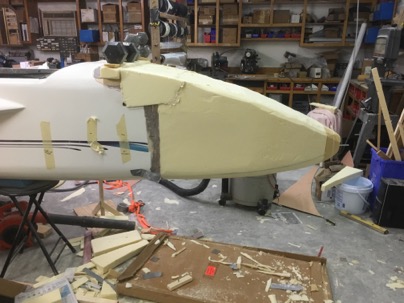
the final nose look has emerged from the foam.
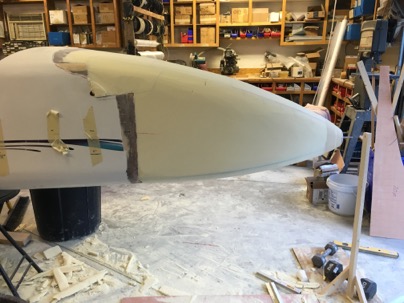
The pitot tube was shorted and came out as hoped for. It is now very ridged and looks good.
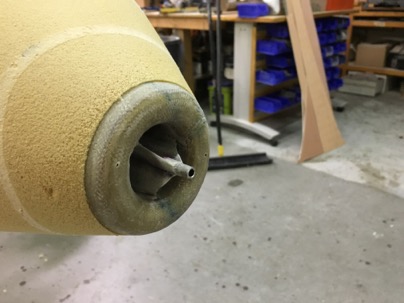
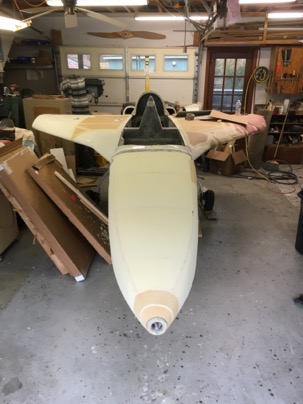
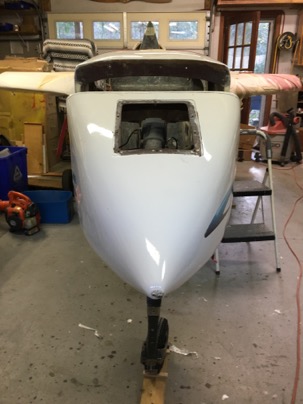
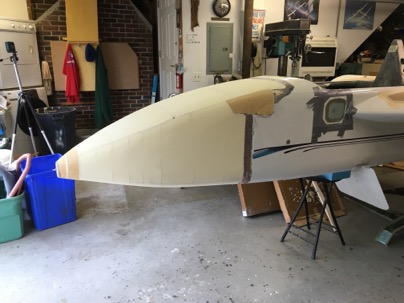
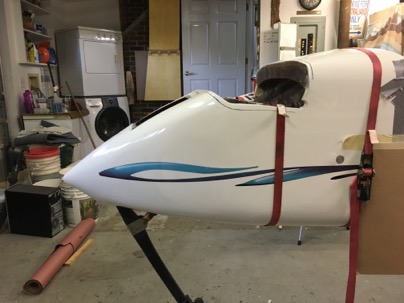
Seems really long to me (only 11” than initially) but it it is possible it looks strange because the canard is not installed at this time. But it does look much better than before.
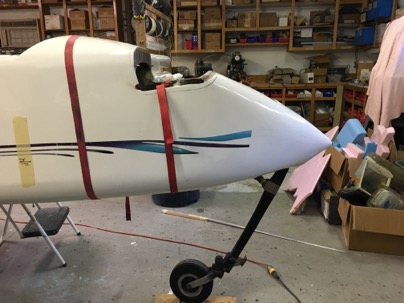
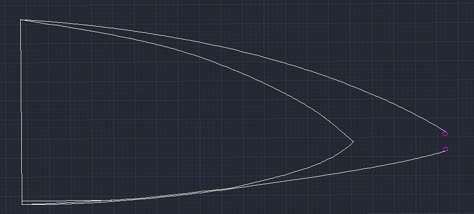
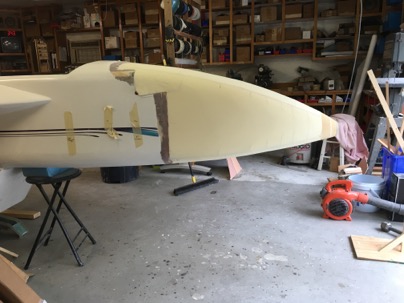
All this work closely matches my design, but overall using Autcad was a waste of time (again).
Lessons learned:
Draw templates for the sides, bottom and top. Anything you want. Cut two templates out of each. Curve the foam (leave the templates on). Mount a bulkhead on a dowel, and put it on the front of the plane. Trim the bulkhead and add the bottom foam. Trim the bulkhead, add the sides and top. Carve. Easy, quick. I bet I could do a nose in less than a week including a custom air box. Ah, the price of learning is steep sometimes.
Eventually, due to the complex shape, I gave up using any templates and just sanded by eye and feel. It came out fairly good, I am pleased. Time to start glassing the structure to the plane..
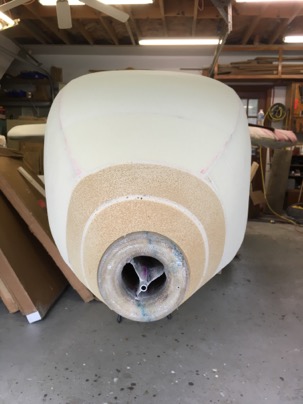
Lessons learned.
You can see in the pictures I sanded down to the lines I cut in the foam for shaping. Had I left the foam in the jigs and attached them to the sides (better curvature), I would not have had to sand down so much material.
Dec
04
2015
After the ring cured, it was cleaned up,
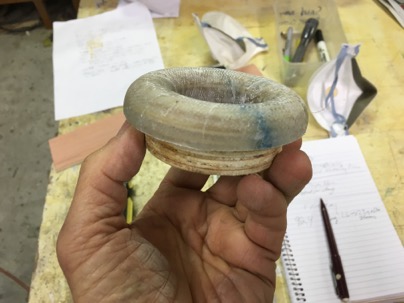
small teeth (notches) were cut into the base
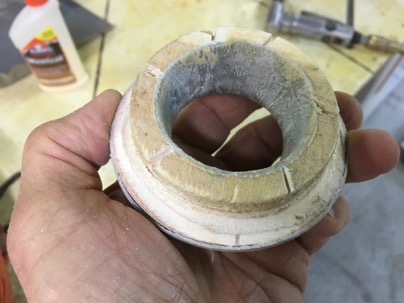
and it was just sanded into place open the nose. Gotta love the ease of working with this foam!! I inserted it as far as possible then floxed it into place.
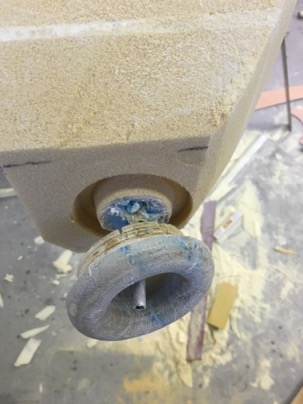
With it installed, now I have a round ring to sand the foam of the nose down to. It will make for a nice smooth look.
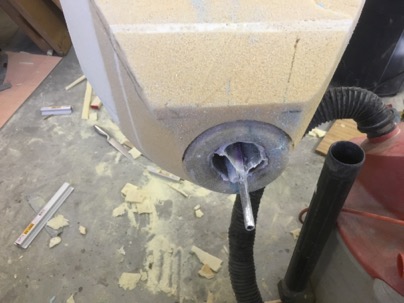
The nose skeleton support dowel was removed, and the inlet tube foam was cleaned out to finally reveal If my idea worked for the inlet.
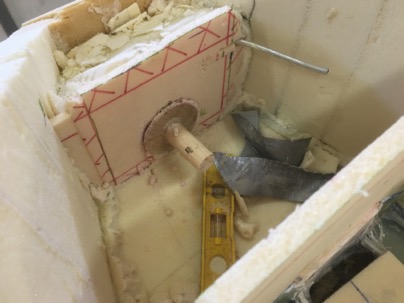
Yah!! I was left with an nice pitot tube in the nose
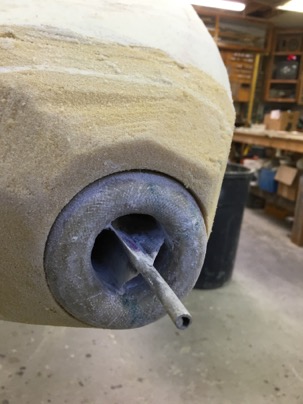
with a rounded inlet at both ends of the inlet tube for a smooth air transition into the separator box which I will have to assemble from 1/4” foam. and then glass into place.
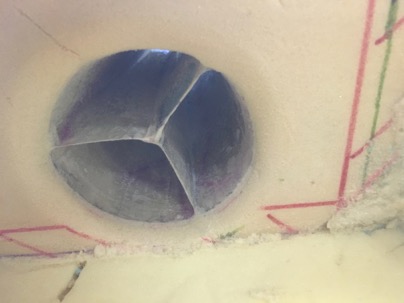
Lessons learned:
This whole concept of constructing the inlet was a bit of overkill and time consuming due to my inexperience. Next time I’ll use urathaine foam, carve the entire inlet assembly (rounded corners, box, and cooler inlet) at one time. Split the box into for pieces. For the pitot tube, glass flat supports (1” wide) in two crosses when cured, re-assemble the box around the tubes, tape the outside of the box (leaving a bit of the support exposed, and glass. It would have been much faster, better quality and easier to do.
To install, after assembling the nose foam (base and sides, the box is put into place and pour foam locked the assembly into the nose. Less time, better quality job.
Dec
03
2015
One issue that has been dogging me is the inlet for the nose. I been trying to figure out an EZ to put a radius on the inlet for better airflow. Finally today I got the idea while in my Think Tank (my pool).
I am not a big fan of nose rings on humans, but decided, Tweety needs a nose ring.
The solution for my inlet is to create a ring for the nose which will slip over the existing inlet tube. The interference fit will allow me to flox it into place. The radius will be formed and glassed. When installed the tube walls will project out the end of the ring which I can then sand away. I will not have to do any complex glassing. Additionally, the ring will allow skin to be bonded to the ring really strong nose termination point. It will save me a bunch of time trying to form and glass a ring using foam.
I glued together a stack of trash 1/4 in luan plywood I was ready to throw away. A rough ring was cut a ring in the bandsaw,
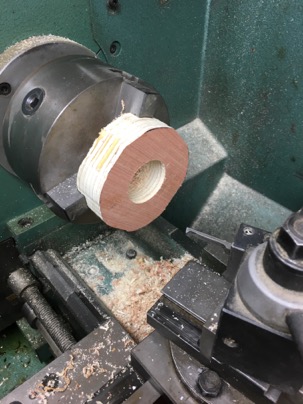
40 minutes on the lath to shape the ring, The inlet tube is shaped at 7 deg and the ring inlet is cut at 10 deg. I will get exactly the 1.75” opening I was hoping for and allow for a nice interference fit.
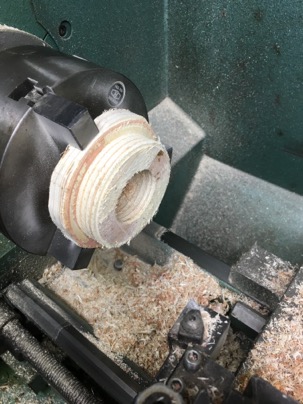
Shaping the ring would had been faster if I could have found my freaking wood turning tools I used to use when turning spindles and bowls on wood lathe I sold. If I can’t find them, I’ll just go to Harbor Crap (harbor freight) and buy a cheap set. I may start turning more parts like this in wood or foam on the lathe.
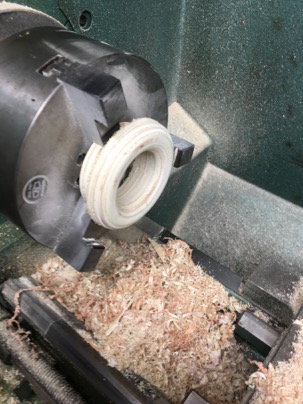
20 minutes to glass
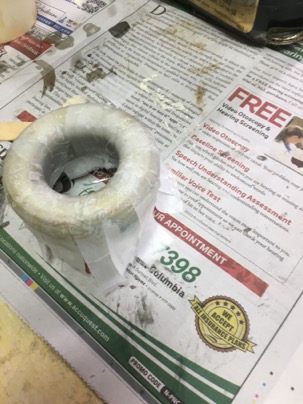
Boom, a nose ring in 1:40 minutes flat. Weight 2 oz.
Yuk, more sanding on the nose.
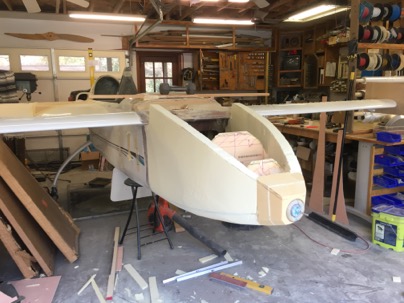
Dec
02
2015
Today the sides were fully attached, and ruff forming started.
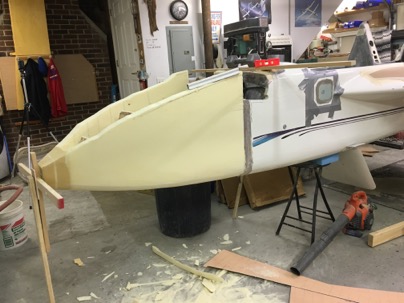
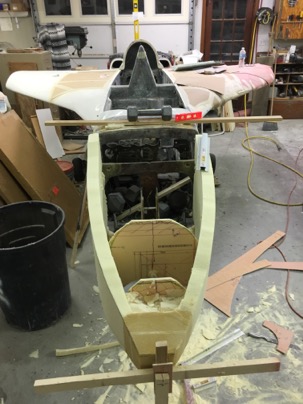
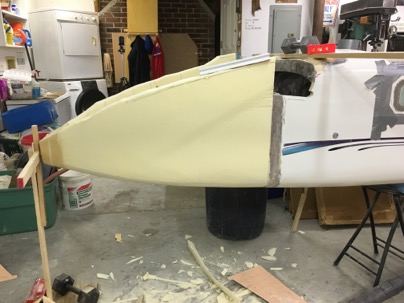
Dec
01
2015
Today I glassed part of the bottom. I thought it was an easy area to get to.
Learned:
In hind sight I probably should have waited to glass the bottom. The problem is water drainage. Since I sealed this part of the bottom, I have to have additional drain holes to accommodate the forward compartment.
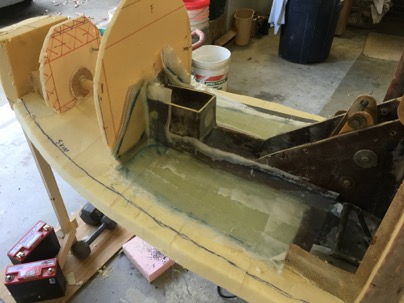
I discovered an easy way to slot the foam and PRE-curve the sides. A little sand paper glued to a sanding board is an easy way to make slots in the curving the foam .
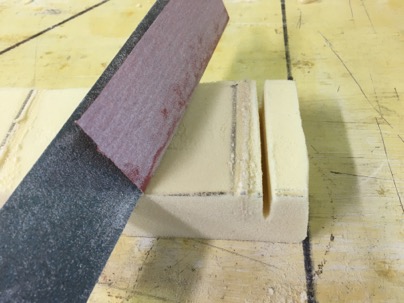
Then using the side templates,
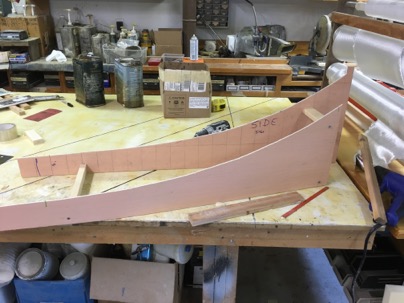
It was easy to curve the foam and lock it in place with some pour foam. The great thing about curving the foam this way (slots) it is a good way to tell how far you sanded into the foam. When you sand and reveal a slot, you have gone deep enough into the foam and had better stop.
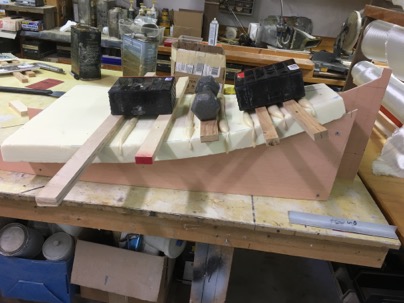
The sides had some spring back.
Learned:
Next time I would make the templates a bit MORE curved to allow for this characteristic.
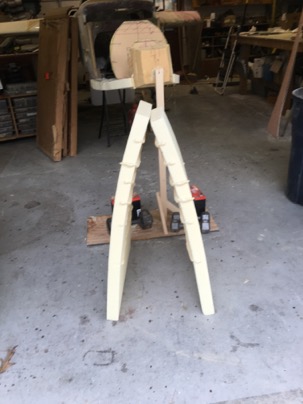
The foam is being fitted to the sides.
Learned:
One should bond the sides to the templates (pour foam), to hold them in place and THEN attach them to the sides to lock them in position. They would be perfectly positioned with no spring back.
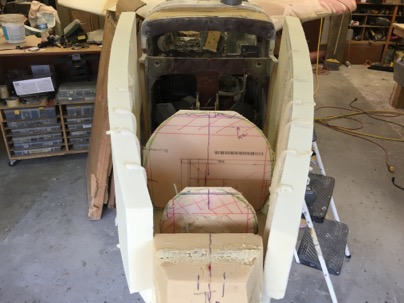
Learned:
Spent too much time planning the size of the bulk heads. I trimmed them when I fitted the sides anyway.































